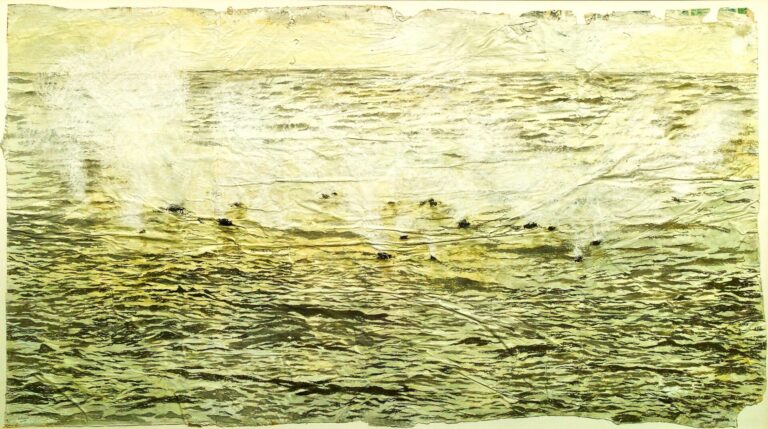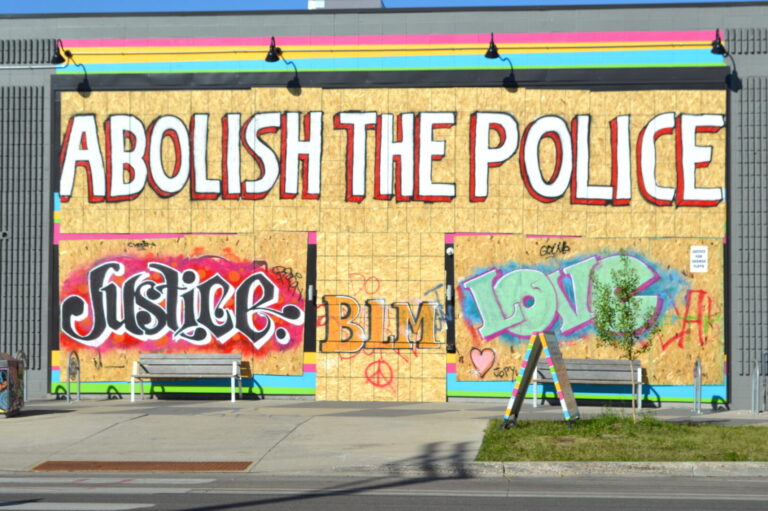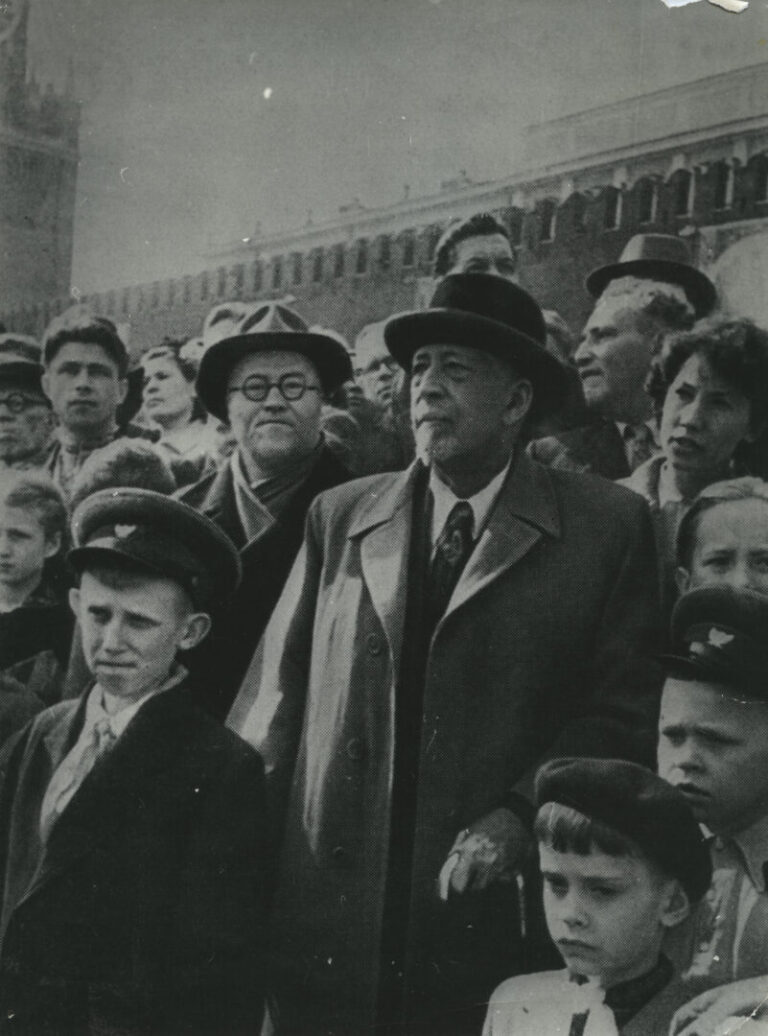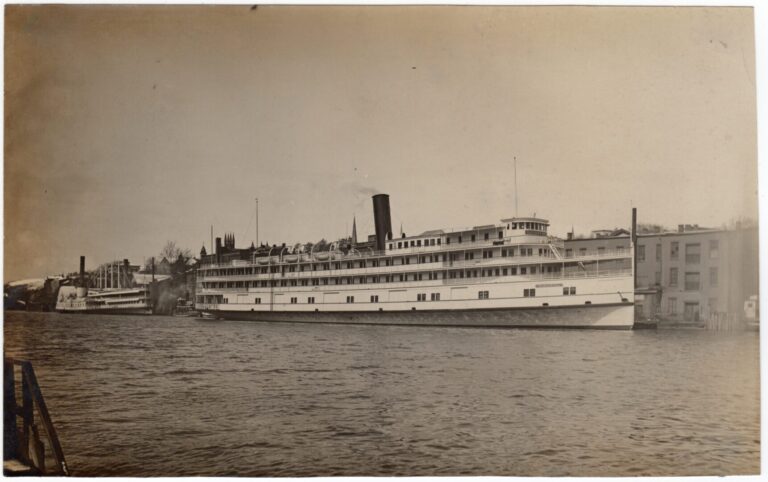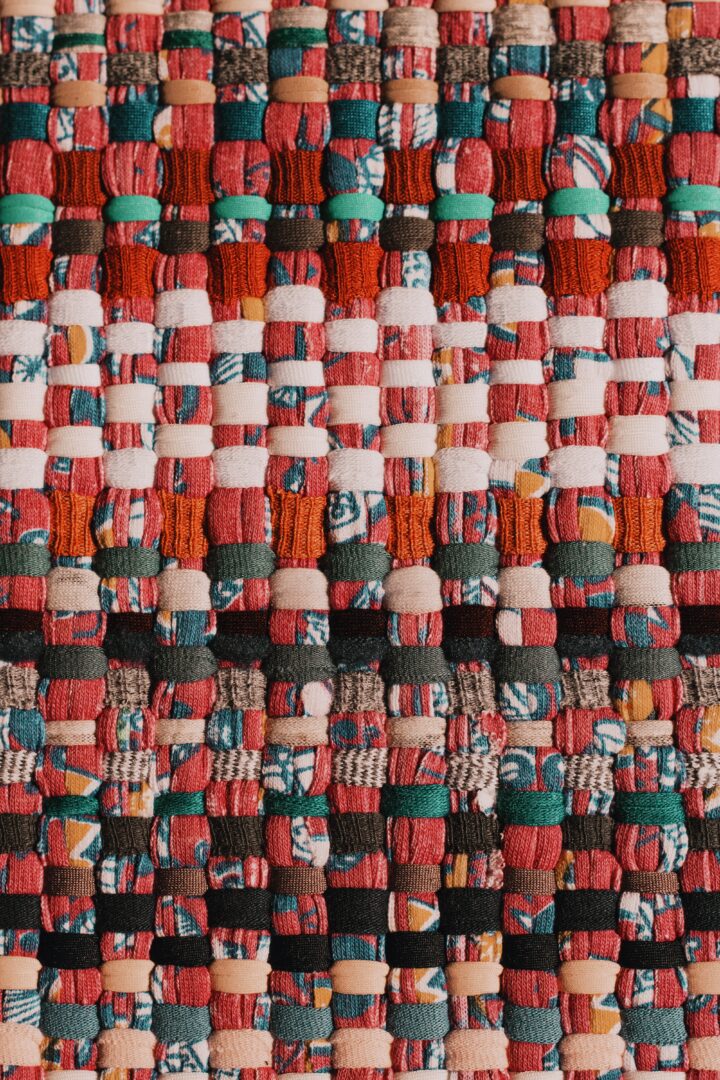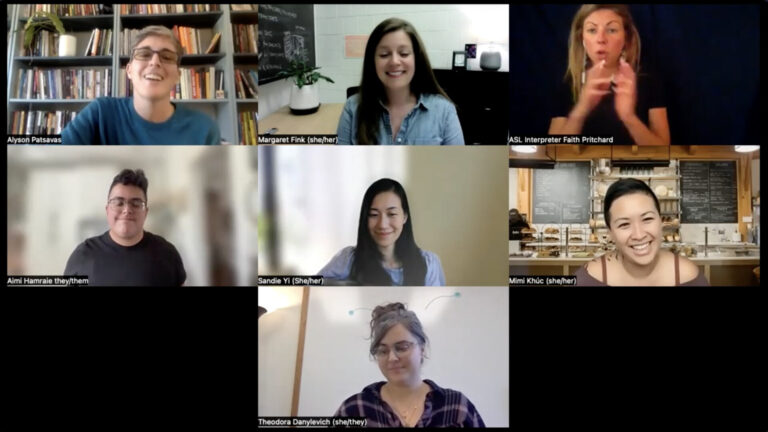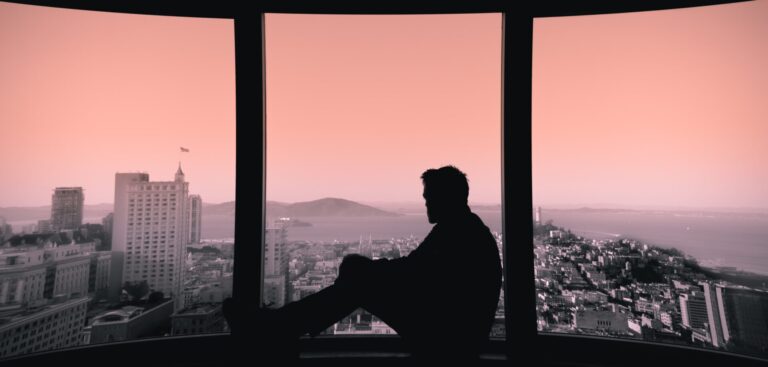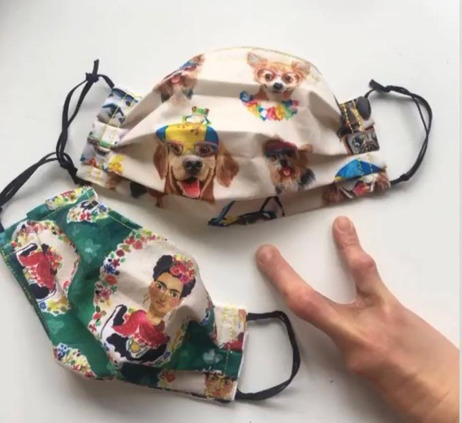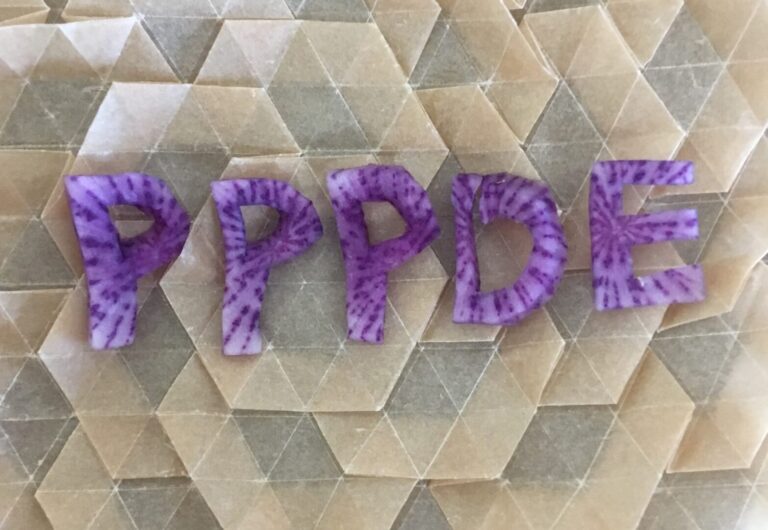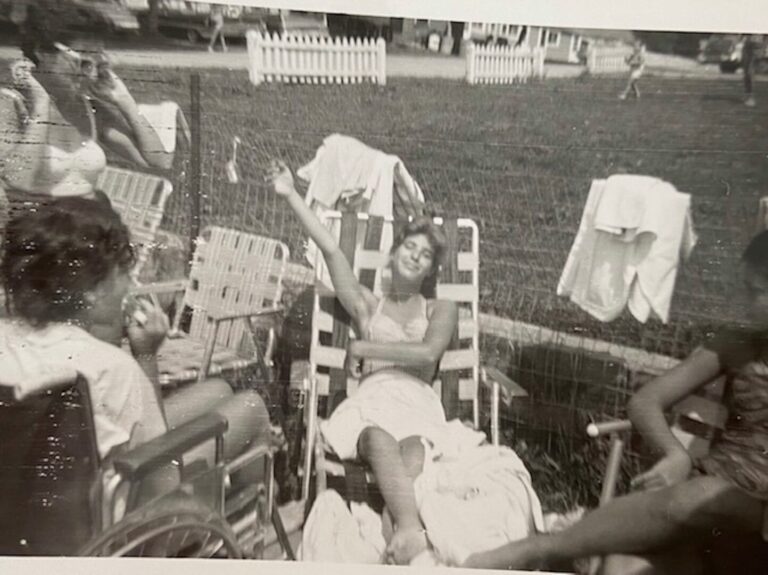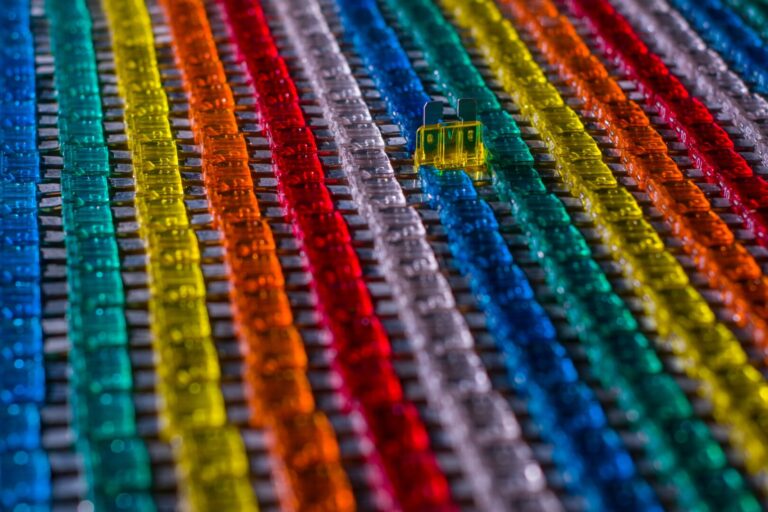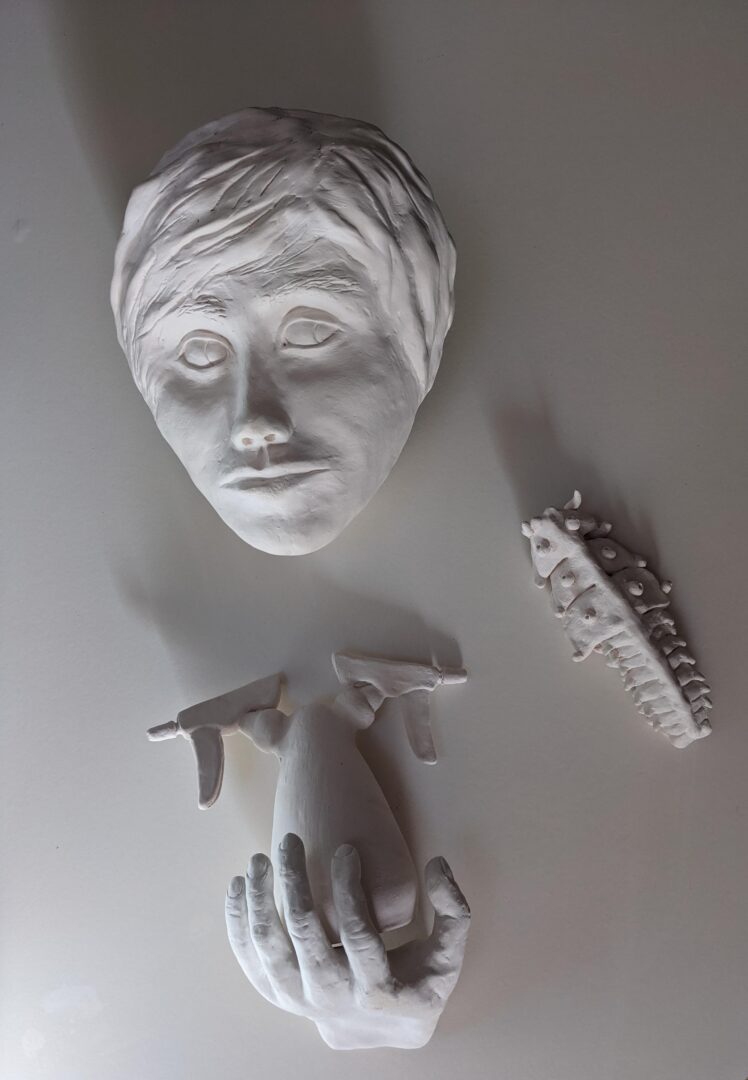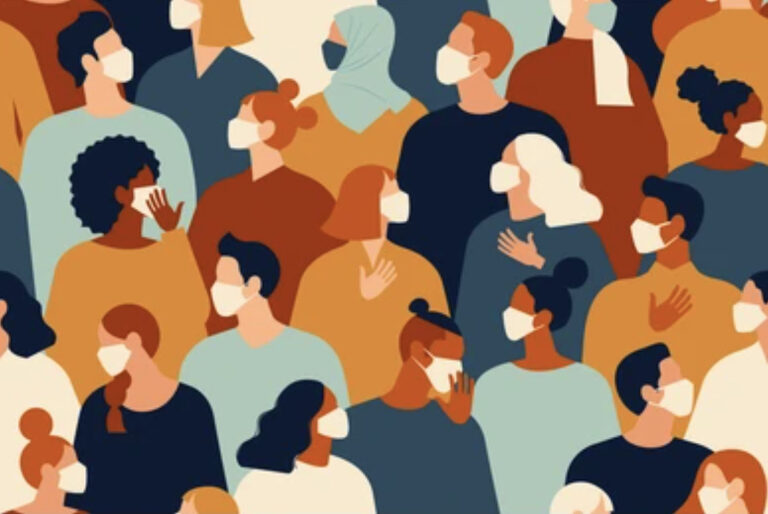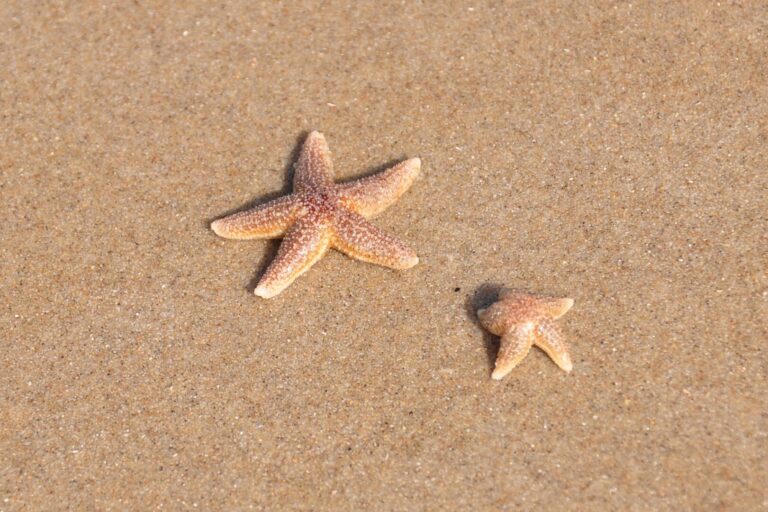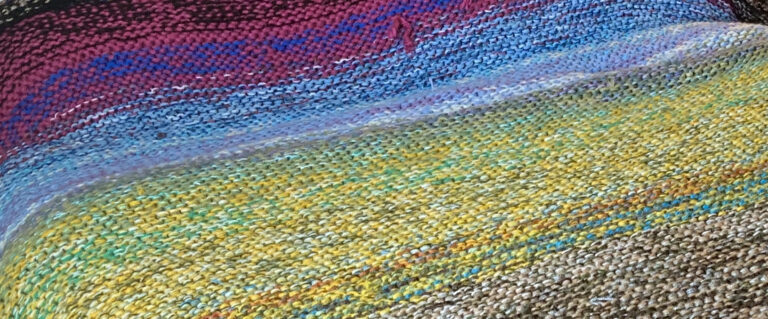In this introduction, the editors continue their reflections on scholarly editing in the pandemic, welcome two new co-editors, and announce a grant-funded initiative that builds on Lateral Forums. This issue features three regular articles, book reviews, and the first installment of a special section, “Crip Pandemic Life: A Tapestry,” which builds on the “Cripistemologies of Crisis” special section, edited by Theodora Danylevich and Aly Patsavas, last year.
Issue 11.2 (Fall 2022)
Watchmen, Copaganda, and Abolition Futurities in US Television
Through this article, we examine the history and conventions of copaganda in the United States, and critically consider how HBO’s Watchmen has responded to and represented the historical relationship between policing and white supremacy. We argue that while Watchmen works to explicitly critique the history of white supremacist violence in US policing, the show reproduces several copaganda conventions. Watchmen depicts central law enforcement characters who commit violence as heroes, uplifts the main police character as an eventually almighty arbiter of justice, portrays white supremacist law enforcement characters as anomalous individual infiltrators (a.k.a. “bad apples”), and was created in collaboration with various members of law enforcement. After presenting this case study in contemporary copaganda, we consider how science fiction series can more meaningfully respond to the movement for police and prison abolition through representing abolitionist futures.
“Revolution of Thought and Action”: W. E. B. Du Bois’s World Search for Abolition Democracy
In recent years, scholars and activists have brought renewed attention to W. E. B. Du Bois’s concept of abolition democracy. Initially coined in Black Reconstruction (1935), to describe both a political movement and a democratic ideal, abolition democracy has been taken up theoretically by Angela Davis, Allegra McLeod, and others to describe the ongoing process of dismantling global capitalism’s political, racial, gender, and economic hierarchies, alongside the simultaneous creation of reconstructed social relations, institutions, and practices governed by universal democratic participation, instead of by force. This article suggests that Du Bois continues to draw on abolition democracy as a conceptual framework in his post-Black Reconstruction work. Tracing the outlines of this framework in his unpublished manuscript A World Search for Democracy, I demonstrate how for Du Bois, the question of democracy remains fundamentally tied to the ongoing legacies of slavery. As he continues to draw on the Reconstruction era as an historical example, Du Bois gives further shape to the idea of abolition as a process in the present (rather than an event in the past). In doing so, he recuperates the unfulfilled promise of abolition democracy as a theoretical and practical model for considering alternatives modes of citizenship beyond the material, ideal, and embodied limits of liberal bourgeois democracy. Accordingly, I argue, in World Search, we can see the outlines of abolition democracy as a three-fold project: political-economic, epistemic, and affective. Each section of this article sheds light on one of these dimensions, drawing on theoretical models from Nancy Fraser, Sylvia Wynter, Sara Ahmed, and Dylan Rodríguez. By thus abstracting the concept of abolition democracy further from the historical movement analyzed in Black Reconstruction, I propose that Du Bois’s World Search offers lessons that can inform abolitionist theory and praxis today.
“Companionship and a Little Fun”: Investigating Working Women’s Leisure Aboard a Hudson River Steamboat, July 1919
This article provides an in-depth consideration of a single report penned on the night of July 27, 1919 by a private detective employed by New York City’s Committee of Fourteen (1905–1932), an influential anti-vice and police reform organization. A close reading of the undercover sleuth’s account, which details his experiences, subjective judgments, and general observations regarding moral and social conditions while aboard the Benjamin B. Odell, a palatial Hudson River steamboat, enables us to enrich our grasp of the courtship and pleasure-seeking practices popular among working women and men active in New York City’s heterosocial and largely segregated amusement landscape during the so-called “Red Summer.” Specifically, the report reveals how wage-earning women articulated femininity and sought individual freedoms, companionship, pleasure, and romance via Hudson River steamboat excursions. The relatively unsupervised atmosphere of such trips was appealing to some working women because it represented an affordable way to attain companionship, prohibited forms of amusement and entertainment, and sexual gratification, a way that sidestepped many of the reputational hazards typically associated with the search for such goods among mainland leisure spaces. Such opportunities were particularly valuable given the crackdowns on public sexuality and late-night amusement spaces that had followed America’s entry into World War I in 1917 and the advent of “wartime prohibition” on July 1, 1919. The article also supplies important contextual information required for proper appreciation of the investigation report in question, including a discussion of the methods and goals of the Committee of Fourteen and a brief overview of prior efforts by Progressive Era urban moral authorities to uncover and control “white slavery,” gambling, and other “vices” witnessed aboard steamboat excursions operating in and around New York, Chicago, and other coastal cities.
Crip Pandemic Life: A Tapestry
Edited by Alyson Patsavas and Theodora Danylevich
Building on “Cripistemologies of Crisis,” (2021), this special section asks contributors to evidence their ephemeral and everyday modes of living and surviving during the COVID-19 pandemic. In doing so, this collection aims to build an archive—or a tapestry—of crip crisis knowledge that collectively addresses and exceeds the question: what do we need to not forget from the pandemic?
Introduction: Crip Pandemic Life: A Tapestry
“Crip Pandemic Life: A Tapestry” takes up a thread from disability justice writer, educator, and organizer Mia Mingus to assemble an archive that “leaves evidence” and captures experience emergent from crip lives and life in the pandemic. The need to gather, hold space for, and preserve evidence—of our angers, our fears, our griefs, our joys, our pleasures, our communities, and our lives—has, for many of us, never felt more urgent. In this editorial introduction to the first installment of the special section of Lateral, “Crip Pandemic Life: A Tapestry,” we narrate project origins in response to pervasive and obfuscating crisis rhetorics, feelings of indignation, and a desire to gather and preserve evidence of crip life and crip knowledge from within the context of the pandemic. “Crip Pandemic Life: A Tapestry” offers a unique digital archive that brings together creative and scholarly reflections to document the experiences of disabled people during the COVID-19 pandemic. The collection includes a multimodal introductory roundtable; multimedia projects; digital renditions of sculptures, masks, fiber arts, and zines; critical interrogations of pandemic politics and policies; and theorizations of crip sociality. This editorial introduction is our brief overview and invitation for readers to travel through spacetimes, bear witness to, and be cared for by this tapestry, archive, collection.
Crip Pandemic Conversation: Textures, Tools, and Recipes
“Crip Pandemic Conversation: Textures, Tools, and Recipes,” brings together experts whose scholarship, curation, organizing and artistic work centers crip insights and creativity to reflect on the work that “Crip Pandemic Life: A Tapestry” undertakes. Margaret Fink, Aimi Hamraie, Mimi Khúc, and Sandie Yi each discuss how the pandemic impacted their work, and they join section co-editors Alyson Patsavas and Theodora Danylevich in discussing the tapestry’s content. Their conversation pulls out some of the most salient threads of the work: smallness, grief, care, community-building, tenderness, and pandemic coping tools. “Crip Pandemic Conversation: Textures, Tools, and Recipes” includes an unedited video recording of a Zoom roundtable session, a lightly edited text version of the conversation, and a glossary of terms that appear in the discussion, as a contextualizing access tool located at the bottom of the document. In choosing a preferred way of engaging with the content, we invite readers to consider, as the roundtable participants themselves do, how access (transcripts, zoom recordings, and captions) produces its own caring archive and knowledge-making practices.
Praxis Projects
Surviving and Thriving: Queer Crip Pilipinx Kapwa Dream Worlds in Animal Crossing New Horizons
As a queer, crip, genderfluid, and diasporic Pilipinx scholar-activist-educator, my ancestors, communities, and I live at the intersections of multiple sites of oppression and resistance. As someone who is sick, disabled, and neurodivergent, I experienced anxiety, depression, and chronic bodymind pain before the pandemic and even more during the pandemic. Nintendo Switch’s Animal Crossing New Horizons (ACNH) video game kept me afloat during uncertain times. ACNH opened up a whole new alternative universe for me to live in. I meditated more when escaping to my scenic and calming virtual island. I relaxed more when fishing, catching butterflies, and hearing the tranquil ocean waves crash within the game. Building my dream world within my ACNH virtual game contributed to me surviving and fostering deeper friendships with fellow sick, disabled, neurodivergent, queer, transgender, Black, Indigenous, and/or people of color (BIPOC) friends. ACNH became a safe way for us to socialize and it continues to be a source of joy for many of us. I highlight how my experiences with ACNH allowed me to cultivate queer, crip, and decolonial Pilipinx Kapwa dream worlds where all beings including people, animals, land, water, and air thrive together.
Autistic, Surviving, and Thriving Under COVID-19: Imagining Inclusive Autistic Futures—A Zine Making Project
This article takes up Mia Mingus’ call to “leave evidence” of how we have lived, loved, cared, and resisted under ableist neoliberalism and necropolitics during COVID-19 . We include images of artistic work from activist zines created online during the COVID-19 pandemic and led by the Re•Storying Autism Collective. The zines evidence lived experiences of crisis and heightening systemic and intersectional injustices, as well as resistance through activist art, crip community, crip knowledges, digital research creation, and the forging of collective hope for radically inclusive autistic futures—what zine maker Emily Gillespie calls “The neurodivergent, Mad, accessible, Basic Income Revolution.” We frame the images of artistic work with a coauthored description of the Collective’s dream to create neurodivergent art, do creative research, and work for disability justice under COVID-19. The zine project was a gesture of radical hope during crisis and a dream for future possibilities infused with crip knowledges that have always been here. We contend that activist digital artmaking is a powerful way to archive, theorize, feel, resist, co-produce, and crip knowledge, and a way to dream collectively that emerged through the crisis of COVID-19. This is a new, collective, affective, and aesthetic form of evidence and call for “forgetting” ableist capitalist colonialism and Enlightenment modes of subjectivity and knowledge production that target different bodies to exploit, debilitate, and/or eliminate, and to objectify and flatten what it means to be and become human and to thrive together.
Coalition-In-Progress: Found Poetry Through Phone Calls with People Labelled/With Intellectual Disability During the COVID-19 Pandemic
For institutional survivors and their younger peers labelled/with intellectual disability, the COVID-19 pandemic and its related lockdowns carry over past experiences under government-directed isolation and mandatory medical interventions. The sudden convergence of past and present necropolitical ableism in labeled persons’ lives colours this crisis, as we—a group of survivors, younger labeled people (who have not lived in institutions), and researcher/allies—attempt to simply stay in touch amid digital divides that cut off our once vibrant, interdependent in-person activities. No longer able to gather, and with limited Internet (or no) access, we resist social abandonment through phone calls. During phone conversations we discuss the affective contours of this time: grief over the past, loss of agency, restrictive rules in group homes, the dynamics of protest, fear sparked by public health orders, and a mix of anxiety and hope about the future. Taking this telephone-based dialogue as evidence of our lives in these times, we present a brief body of collectively written found poetry, a form of poetic inquiry composed of phone call snippets. This piece, coauthored by twenty members of the “DiStory: Disability Then and Now” project in Toronto, Canada, offers a snapshot of coalition-in-process, keeping in touch amid a crisis that threatens our togetherness and—for some more than others—our lives. Following Braidotti, we couch this found poetry in a brief commentary on our slow, in-progress attempt to “co-construct a different platform of becoming” with one another amid a divergence of historical and contemporary inequities.
A Dialogue and Reflection about the Masks for Crips Project
Masks for Crips was a mutual aid project that centered the Chicago disability community. Alison Kopit and Chun-shan (Sandie) Yi began the project at the onset of the COVID-19 pandemic, and it ran from March 2020 through July 2020. Early in the pandemic, when personal protective equipment (PPE) was difficult to come by and the state was not caring for those most impacted by the pandemic—disabled people, essential workers, people living in congregate facilities, and unhoused people, to name a few—the project provided homemade masks to disabled people and their care teams in the Chicagoland area. Masks for Crips addressed an infrastructural gap and disability community need in an urgent way, and provided information about how to use and care for masks, as well as best practices for reducing risk surrounding COVID-19. The project was born through text message-based conversation in March 2020 as Alison and Sandie held space for each other by sending memes, texts, and support informally. From those moments of connection, they proceeded to expand outward and develop a mutual aid project that delivered about 300 masks, start to finish. The project brought together delivery and mask-making volunteers while serving as a means of connection and an expression of disabled care during an isolating time.
Personal Protective Purple Daikon Equipment: A Handbook (and an Autistic Manifesto)
During the Spring semester 2020, I took an art class at the Rhode Island School of Design. “Personal Protective Purple Daikon Equipment: A Handbook” was my final project for the class. Part zine, part Zoom performance experiment, part autistic meltdown, the project bears witness to my anger, isolation and fear during the lockdown. It is both a commentary on academia and the constant demand to “make use” of every experience—to continue academic life as usual even during a pandemic that saw so many disabled people die—as well as a handbook for making one’s own Personal Protective Purple Daikon Equipment (PPPDE) at home and an absurdist manifesto. As a research-creation project, the Personal Protective Purple Daikon Equipment offers a snapshot of a moment in (crip) time, that of the first state-sanctioned lockdown and of the early days of the pandemic.
Essays
How Do You Grieve During an Apocalypse?
This essay is a rumination on loss during the pandemic—not only the physical loss of loved ones but the loss of experiences and time. Focusing specifically on the death of my aunt, Joyce Dana Apostole, I reflect on what it means to mourn, not only as an individual but as a collective. Through the retelling of significant moments in Joyce’s life and recalling our relationship, I consider the questions: How do you navigate grief when you cannot congregate with others? How is that grief compounded by institutional failures—medical, governmental—and informational lack? And how does social response to individual and mass loss reflect philosophies and policies that (continue to) devalue—and prove detrimental to—the lives of disabled people? Ultimately, this essay is not only a reflection on grief, but it is also a eulogy, an opportunity to fully recognize my aunt and her complex history, a life shaped by illness and disability in ways that counter popular narratives of recovery and overcoming. It is an archive of not only what was, but what wasn’t, necessary documentation within a culture in which “return to normalcy” can become synonymous with forgetting.
On Navigating Paranoia, Repair, and Ambivalence as Crip Pandemic Affects, Or, I’m So Paranoid, I Think Your COVID Test Is About Me
How do my “hermeneutics of suspicion” color this current crisis? In this auto-theoretical essay, I reflect upon the blend of judgment, suspicion, and paranoia that have settled into my body-mind this past year, and how these feelings shape my engagement with people, institutions, and systems. I have been taught that “judgment” is an essential aspect of immigrant and crip safety. Recently, it has become my (crip)epistemology, and I cannot decide whether this is for better or worse. On the one hand, suspicion is productive. It has kept me and my loved ones alive in a time of deliberate death. On the other, it frustrates, disrupting my capacity for connection. I check my temperature constantly, I hear the guilt in my voice when my family in India tell me they have not left the apartment in months, I spend precious time with friends calculating their risk relative to mine, I go to protests but am afraid of the consequences of my solidarity. Drawing on Eve Sedgwick’s essay on paranoid reading practices, Patricia Stuelke’s Ruse of Repair, Sianne Ngai’s work on ugly feelings, Nikolas Rose’s analyses of somatic ethics, and Mel Chen’s theory of racialized toxins, I explore the modalities that paranoia has both enabled and disabled for me. I examine my ambivalent relationship with repair—some reparative practices like mutual aid sustain queer/crip/immigrant community while others like cure constrict our lives. This piece aims to tease out the tensions latent in crip worldmaking between suspicion and generosity, public health and communal care, and paranoia and repair.
The Queer Aut of Failure: Cripistemic Openings for Postgraduate Life
I, a Mad, autistic, multiply-disabled person, began my PhD in Cultural Studies in September of 2020. I started to make my home in graduate school during the COVID-19 pandemic, fully online, and I’ve excelled, calling into question normative assumptions of in-person socialization, education, and collaboration as superior to their virtual counterparts. In this article, I reflect on the cripistemic pedagogies of failure that facilitated a neuroqueered and transMaddened transition to Zoom-based graduate life. I will also consider email, text messages, and video calls as equalizing mediums in which both formal and fugitive spaces can open for queercrip collaboration across borders, timezones, and access needs. Lastly, I will tell the stories of technological “failures” that I have experienced—miscommunications, failing internet, time delays—as generative possibilities rather than indictments of a non-normative learning. Necessarily imperfect and rife with humorous, intriguing, and profoundly human failures, as well as surprising and generative openings, pandemic education has ushered in new queercrip, transMad, ways of knowing and teaching that have uniquely benefitted me. Far from a circumscribed or lacking educational landscape, I argue, post-COVID academia is filled with pedagogical and epistemological openings, holes through which new disabled and Mad scholars, myself included, can make ourselves a beautifully imperfect home space. I invite you inside.
Roundtable: Crip Student Solidarity in the COVID-19 Pandemic
This roundtable shares the first-hand experiences of five crip, disabled, Mad, and/or neurodivergent doctoral students navigating academia in so-called Canada during the COVID-19 pandemic. While we discuss and theorize our experiences of ableism, structural oppression, and inaccessibility in the academy, we also highlight the world-building experiences of solidarity that have emerged for us in crip community, and in particular among fellow crip graduate students. We consider the ways that crip students open up potential for new ways of learning and being by challenging dominant norms of academic productivity, and we also consider what is lost when these students are pushed out of academic spaces. By engaging in “collective refusal” of the conditions that harm disabled and otherwise marginalized students, new possibilities emerge for connection, community, and radical change. The virtual conversation transcribed here took place over Discord, email, and Google Docs in autumn of 2021 and early winter 2022. This piece embraces multi-tonality, that is, a range of different voices and ways of writing, speaking, and communicating. It is a conversational piece that intentionally blends varied approaches to knowledge-sharing: polemic, citationally-grounded, and personal anecdotes drawn from our diverse lived experiences. There are a number of different themes woven throughout the text, including anecdotes and personal history, solidarity, ableism in the academy, pessimism/failure, community/interdependence/intimacy, and utopia/futurity/demands for the future. While not intended to provide policy guidance or step-by-step instructions for changing academic culture, we also begin to sketch out some of our dreams for an alternative future for disabled scholars. We discuss imagined futures and possibilities, and ask, is a truly crip and/or accessible academic institution possible?
Creative Works
Our Thoughts: Reflections on OCD, the Pandemic, and Society
In this socially engaged and collaborative project, the topic of obsessive-compulsive disorder (OCD) is explored artistically. A poem and sculpture depict and contemplate the lived experience of OCD and how it relates to contemporary times. The project grew out of a friendship between Mick, the alias for someone who has OCD, and Dana Fennell, a researcher who studies OCD.
Chronic Illness Wisdom is Both/And
This poem reflects on dual tensions that sick & disabled communities have to navigate during ongoing pandemic conditions. In particular, it addresses the chronic illness knowledges that people with post-viral illnesses already possess (the reality of chronic conditions after acute infections, the necessity of solidarity across bed space) in the face of medical and political institutions that refuse to know.
August 2020
Unemployed at the time, not visibly disabled, but having become quite unwell in the middle of a pandemic, this poem illustrates my anxious and exhausting insomnia against the caretaking labor for my youngest child. I worked to minimize the projections of stress and anxiety onto her, laboring for stillness and comfort. As Luce Irigaray states in An Ethics of Sexual Difference (1993), “Music comes before meaning. A sort of preliminary to meaning, coming after warmth, moisture, softness, kinesthesia” (168).
Overwhelmed
The isolation, stress, and uncertainty fueled by the COVID-19 pandemic has challenged our collective mental health. For people with preexisting psychiatric disabilities, these repercussions are further magnified. This is particularly true for individuals who have experienced involuntary confinement in “corrective” facilities. For survivors of institutional abuse, the gross restriction of movement generated by the quarantine and lockdowns replicates the systems of total control to which they have previously been subjected. Facing an uncertain future and lacking access to community support systems, many survivors have been forced to improvise mechanisms to relieve traumatic symptoms on their own. While these self-soothing mechanisms can provide relief during moments of acute distress, they may be ultimately destructive and exacerbate long-term symptomatology. This artwork is an expression of overwhelm and the conundrum faced when survival strategies that meet immediate needs threaten long-term well-being.
Security Blanket: Neuroqueer Knitting in Pandemic Times
This article presents neuroqueer knitting as a cripistemological practice in the context of the COVID-19 pandemic, during which the author realized that knitting was part of how they moved through trauma. Tracing the process of making a blanket during part of the pandemic, a time in which they were also relocating, the author argues that knitting offers a knowledge-making practice aligned with their autistic ways of being in the world. Treating this blanket as theoretical material, the author uses it to challenge ableist ideas of autistic people as lacking the capacity to narrate their experiences. Instead, this blanket is used to reflect alternative modes of knowing that document the author’s continued existence and survival in moments of trauma and upheaval.
assembly required: textures of madness, joy, memory
This piece stitches and layers together a mix of photographs, poetry, and reflections to tell a story—my story—of c-PTSD, grief, (chosen) family, and my constant yearning to exist fully as myself.
